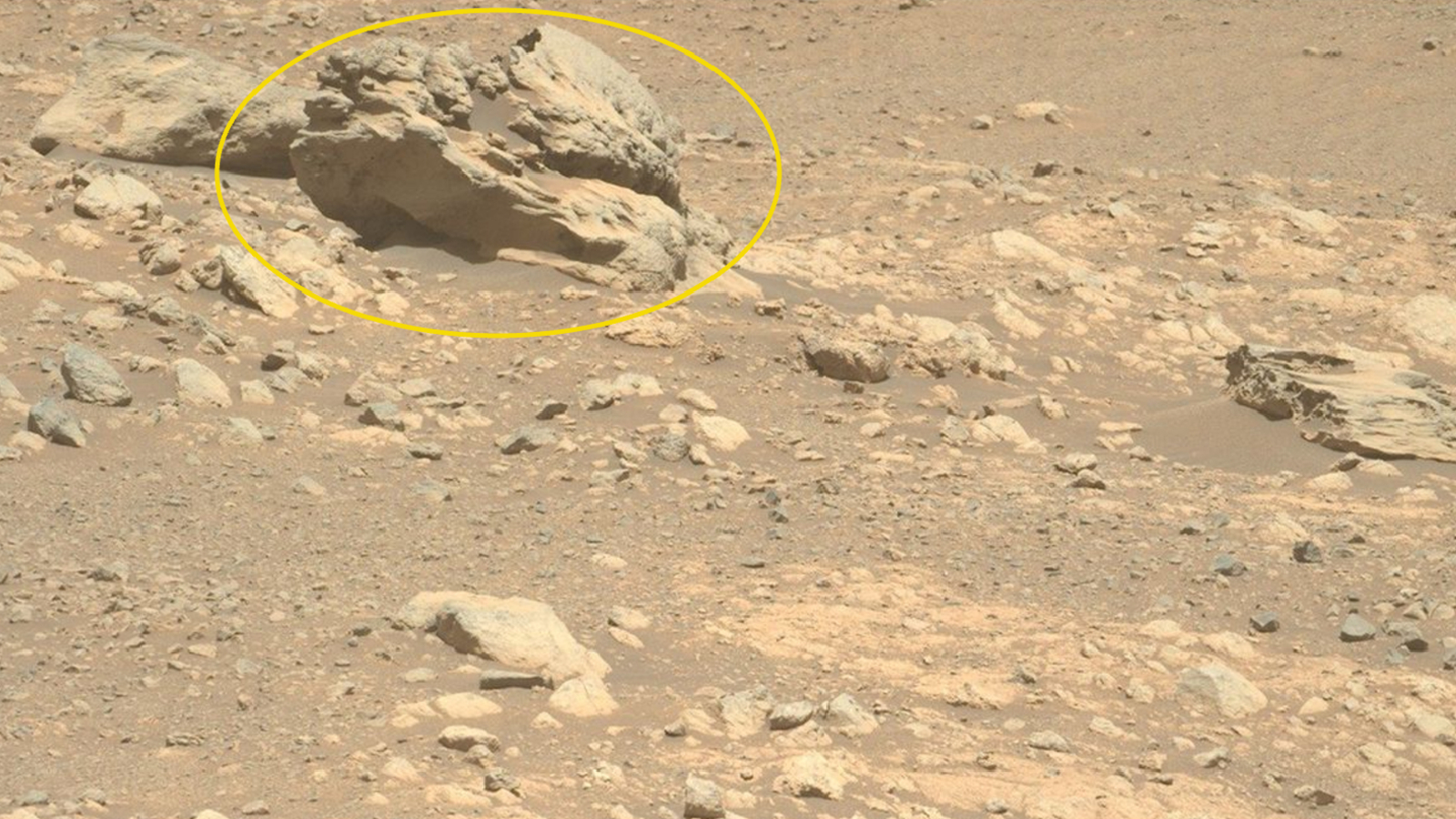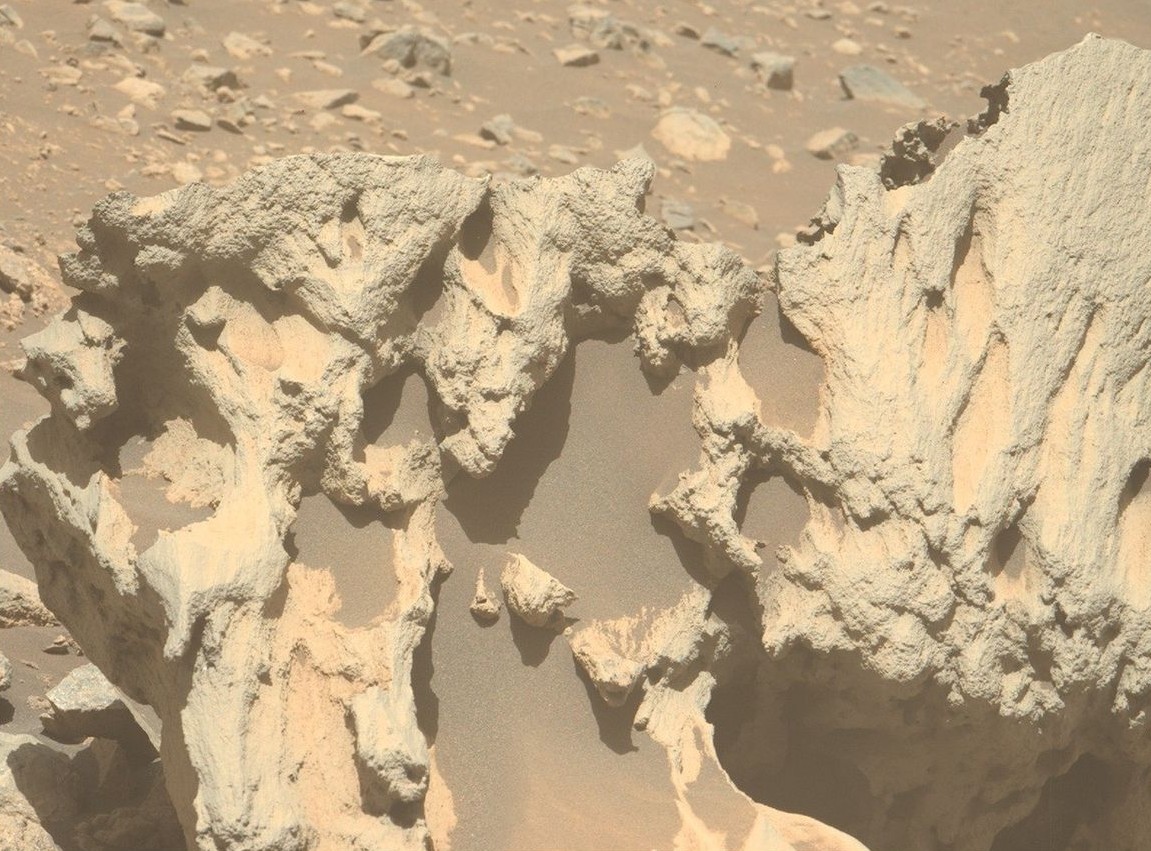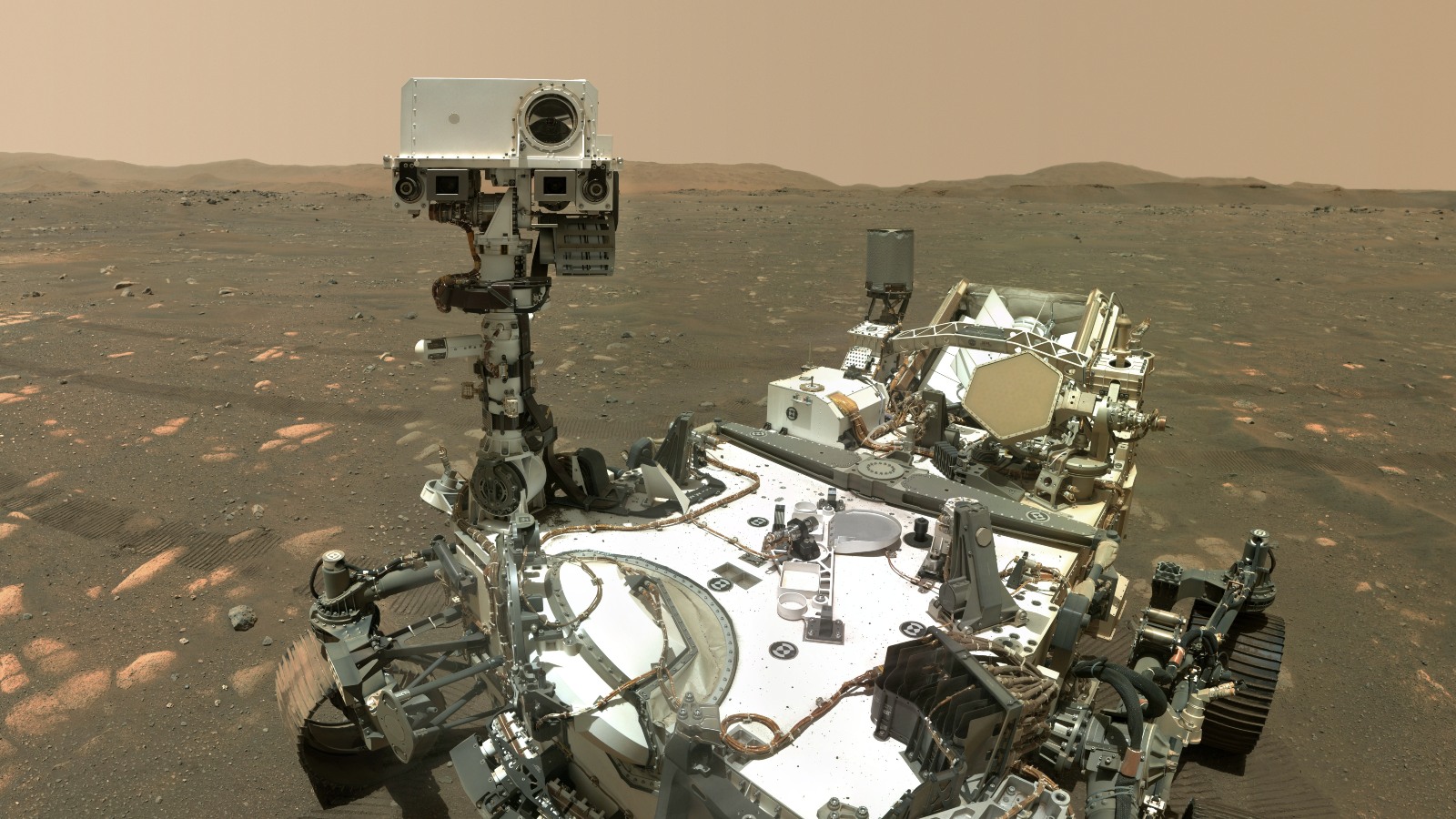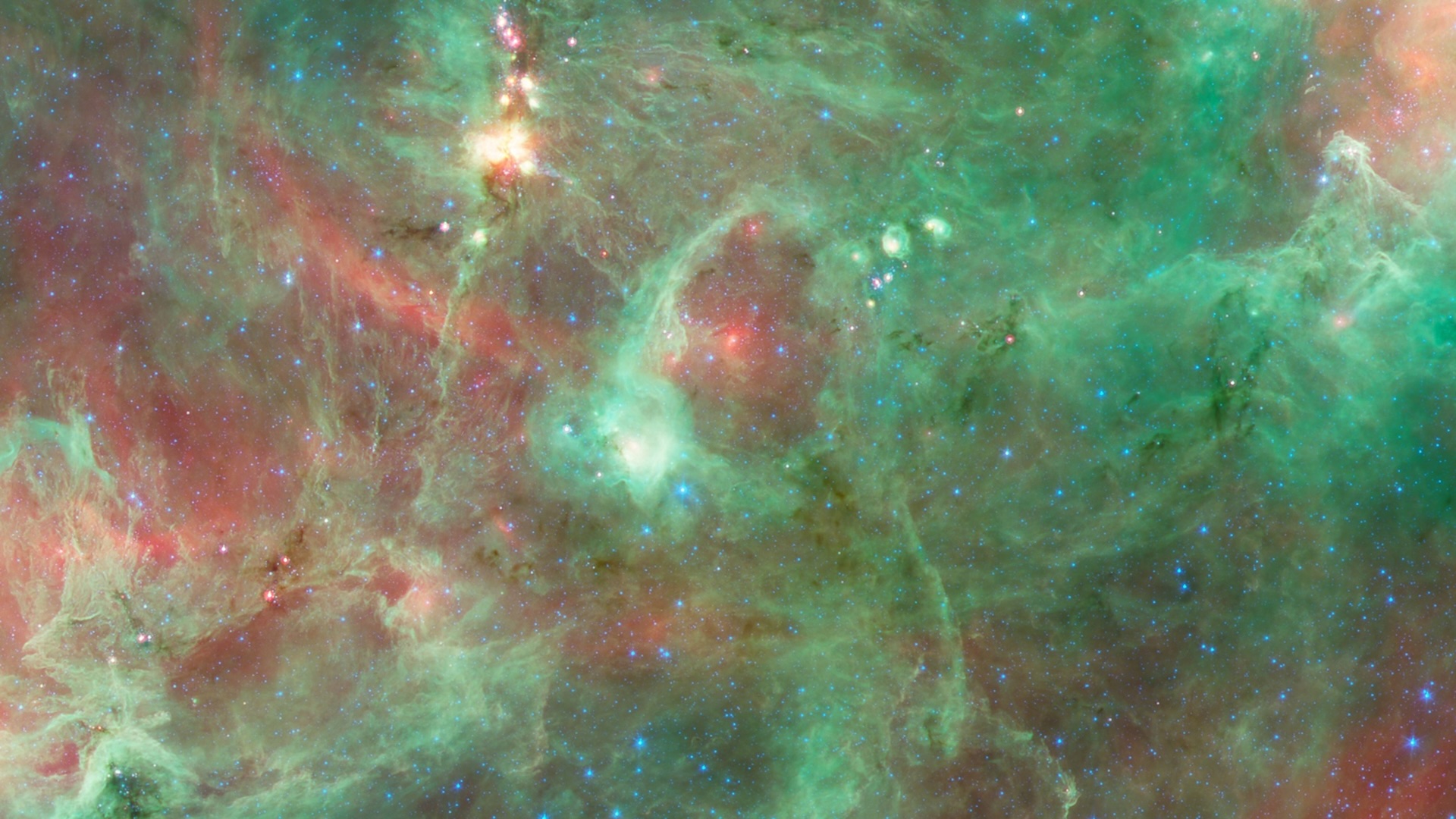Odd-looking rock on Mars is totally alien to the Red Planet, Perseverance rover finds
NASA's Perseverance Mars rover recently came across an odd rock, dubbed "Phippsaksla," that is unlike anything else the robot has found on the Red Planet. It turns out that it probably isn't from our neighboring world and likely crashed on Mars instead.

NASA's Perseverance rover has discovered a highly unusual rock lying on the surface of Mars. The lumpy boulder, which has a metal-rich composition, is most likely a meteorite that crash-landed on the Red Planet — and it's the first one that Perseverance has found during its four-year mission scouring Mars rocks for signs of life.
Perseverance has found many different rocks since landing within Mars' Jezero crater in early 2021, including a "spider-egg" rock, an out-of-place "skull" and, most recently, a bizarre "turtle-shaped" formation. Some of these rocks have also yielded surprising results, such as strange nodules recently found in organic-rich samples, which could be the "clearest sign" yet of past extraterrestrial life on Mars.
Until now, the one thing that all the rocks surveyed by Perseverance had in common was that they originated on Mars. But on Sept. 19, during the 1,629th Sol (Martian day) of the rover's mission, the wandering robot came across an odd-looking boulder while exploring an area of Jezero dubbed "Vernodden." The unusual rock, which measures around 31 inches (80 centimeters) across, has since been named "Phippsaksla" — and is unlikely to have a Martian origin.
"This rock was identified as a target of interest based on its sculpted, high-standing appearance that differed from that of the low-lying, flat and fragmented surrounding rocks," Candice Bedford, a geochemist and mineralogist at Purdue University's Planetary Science department, wrote in a NASA statement.
Analysis of the rock revealed it has a high concentration of iron and nickel, which is unusual in Martian rocks. But these metals are commonly found in meteorites, "suggesting that this rock formed elsewhere in the solar system," Bedford wrote. It is unclear how long it has been on Mars, but it is likely millions, if not billions, of years old.

"This is not the first time a rover has encountered an exotic rock on Mars," Bedford wrote. In fact, three different NASA rovers — Spirit, Opportunity and Curiosity — have found potential meteorites during their respective missions, she added. (Of these missions, only Curiosity is still active.)
"As such, it has been somewhat unexpected that Perseverance had not seen iron-nickel meteorites within Jezero crater, particularly given its similar age to Gale crater [where Curiosity currently resides]," Bedford wrote.
Get the world’s most fascinating discoveries delivered straight to your inbox.
Despite finding the potential meteorite roughly two months ago, the discovery has only just been announced due to the recent U.S. government shutdown. The NASA statement about Phippsaksla was originally written on Oct.1, the same day the shutdown began, and was released on Nov. 13, the day after the government reopened.
The shutdown proved to be quite eventful for NASA. Live Science's sister site Space.com recently reported that officials had likely begun implementing the agency's proposed budget cuts during this time, before they had been approved by Congress. And since the shutdown has ended, NASA scientists have been busy sharing previously withheld images of the interstellar comet 3I/ATLAS.
However, Perseverance remained online throughout the entire shutdown along with several other "mission-critical operations."

Martian meteorites
While finding meteorites on Mars is uncommon, here on Earth we have found lots of space rocks that came from Mars.
These Martian meteorites were ejected by other large meteor impacts on Mars, and later fell to Earth after drifting through space for thousands of years. They are highly sought after by scientists because they can tell us a lot about the rocks on Mars, just like Perseverance.
In 2024, one study found that around 200 of the Martian meteorites that have fallen to Earth originated from just five different impact craters on the Red Planet.
And in July, one Martian meteorite — a 54-pound (24.5 kilograms) space rock dubbed NWA 16788, which crashed into the Sahara desert in 2023 — was sold for $5.3 million at auction, which is a new record for a Martian space rock.

Harry is a U.K.-based senior staff writer at Live Science. He studied marine biology at the University of Exeter before training to become a journalist. He covers a wide range of topics including space exploration, planetary science, space weather, climate change, animal behavior and paleontology. His recent work on the solar maximum won "best space submission" at the 2024 Aerospace Media Awards and was shortlisted in the "top scoop" category at the NCTJ Awards for Excellence in 2023. He also writes Live Science's weekly Earth from space series.
You must confirm your public display name before commenting
Please logout and then login again, you will then be prompted to enter your display name.
